
SENTIENCE: ART AND PERFORMANCE TECHNOLOGY
Sentience is all-encompassing, it is both conscious and unconscious. The Sentience program explores these notions in relation to performance and digital technology through four different lenses: Animality, Machinic Sense and Sensibility, Politics of Sentience, and Matters Mattering.
Animality
Animality focuses on the evolution of sentience in natural form. The work aims to take the audience on a transformative journey of the familiar 'human state', delving into the unknown of animal, plant, particle, and technology. The work attempts to evoke audience awareness amongst oneself, probing an emotional encounter as a sentient being. Animality presents this unfamiliar state through the culmination of visual depictions alongside the pairing of physical movement. Animality investigates the intersections between dance and technology presented as a live performance in combination with projections and an audio-visualiser animation.
The Curators:

Emma Walton
BFA (Dance Performance)

Anastasia Vogelslang
BFA (Dance Performance)

Lilly Winter
BFA (Dance)
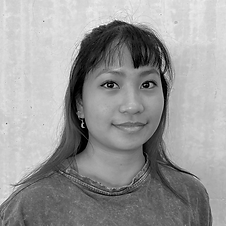
Joyanne Dunn
BFA (Dance)

Målfrid Søndenaa
BFA (Dance Performance)

Madison Farrell
BFA (Dance Performance)

Taylor Seymour
BFA (Dance Performance)
Project Intentions and Aims
Focusing on the evolution of sentience in animality form, 'Animality' aimed to take the audience on a transformative journey of the familiar 'human state', delving into the unknown of animal, plant, particle, and technology. Our ambition within this work was to experience a somatic practice within our collaborative process. Upon this, we objectively aimed to evoke audience awareness amongst oneself, probing an emotional encounter as a sentient being. The intention for 'Animality’ was to create sensation within the body with the visual display, sound, breath work and movement representations. It was a developmental process for us creating work that is both embodied and natural, as well as being digital ‘beyond human form’. Using movement as the vehicle, ‘Animality’ presents this sentient evolution from human and non-human domains.
Ideation
Ideation and conceptualisation is ‘the process where ideas are generated through brainstorming’ (Dam R, 2021).
Within week one of engaging with the project, I established ideas and generated discussion with my group by posing relevant questions on the topic of ‘Animality’, which is the ‘non-human and beyond human senses of expanded notions of aliveness, hylozoism and panpsychism in species other than humans’ (ISEA International, 2020).
These questions then prompted research relating to plants, animals, organisms, breath, and sentience as a whole.

Choreographic Process
With my group entirely consisting of seven dancers, we were each able to appropriately utilise our knowledge and disciplinary practice through the use of dance choreography, which was predominantly executed throughout the work. Throughout our creative process, we researched animal perception and movement, as well as the intelligence of plants and their forms of communication. Then, as a group we constructed choreographic phrases from the notion of being non-human.
15 April 2021 - Opening Phrase Choreography
After researching how breath is a unifying factor amongst all life form including plants and organisms, I engaged in a practice that required me to connect with my breath and reflect on any feelings and sensations experienced throughout. With this sensory information, I was then able to create movement phrases and further research how one’s feelings and movements can be influenced when focussing on their breath. As a group, we then discussed our experiences and shared our phrases, to which we then created this opening phrase for our work.
15 April 2021 - Shadow Experimentations
Improvisation and experimentation were used often throughout the development of ‘Animality’, as we were able to trial and view different options and then choose the most effective options to include. In this example, we improvised hand movements onto our white circle projection, which created shadows. Initially, we loved the aesthetics it created, however, we decided not to include this idea as it did not connect with our concept and had no meaning to it.
Canon Development
While particles were being projected onto the screen, my group and I performed a canon sequence consisting of isolated movements in the order of right knee, left elbow, head, hips, right arm, left arm, right foot, and hinge. Initially this phrase allowed each group member to have freedom and interpret the movement individually. However, after receiving feedback at our first showing, we developed this sequence so we each performed the same movement pathways.
Tiger Phrase
Reflecting back on the feedback given by our lecturers and peers after our showing in week seven, it was made clear that our choreography needed to be reworked in order to create meaning. Through gathering further research on the mannerisms and movements of animals such as humans, tigers, monkeys, crows, dolphins, and plants, I was able to collaborate with my group and choreograph symbolic movements for each of these animals projected during our work.
'Animality' - First Choreographic Full Run
30 May 2021
Screen Material
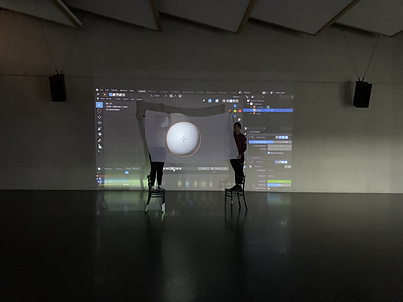
As a ‘resource gatherer’, my first task required me to source black and white sample fabrics such as chiffon, plastic, fly-screen, scrim, and canvas from Spotlight. These were then used to experiment our animations on when using the projector.


As a group we found it challenging to decide on which colour chiffon to use, as both the colours black and white had many of their own benefits. We then sourced feedback and opinions from the second year dance performance students, who then suggested that the most effective fabric for our work was chiffon in the colour of black.
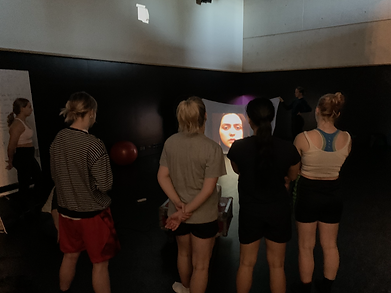
Chiffon Screens
Having parents who own a playground business entitled ‘Bespoke Playgrounds’, I was able to access materials such as 40mm x 40mm pine timbers and hooks, as well as an electric saw, drill, sander, and staple gun. With these resources, I was able to create the two chiffon screens which were then hung from the grid in our performance space and used to project videos onto throughout our work.


Bespoke Playgrounds workshop located in Virginia, Brisbane

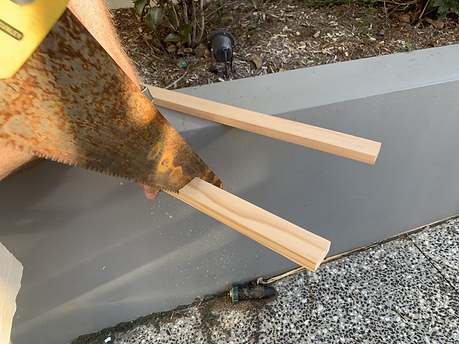
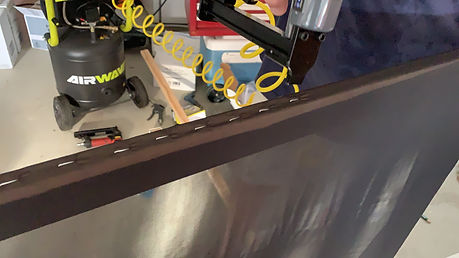

Process of creating the two chiffon screens



Final outcome of chiffon screens hanging up in the performance space
Marketing on Instagram
I created an Instagram account for our project which features photos and videos of the creative process of ‘Animality’. By sharing and documenting a process for any project, the target audience can be informed as to how the work was evolved and how the final work was created (Shinabery K, 2019). The Instagram handle I came up with is @animality_scp, and with my role, I was able use my knowledge and passion in social media to attract audiences to follow our journey, and also gather content to post as a way of marketing our project.


@animality_scp profile picture
Tech Runs In The Performance Space




Sentience: Art and Performance Technology Showing Night
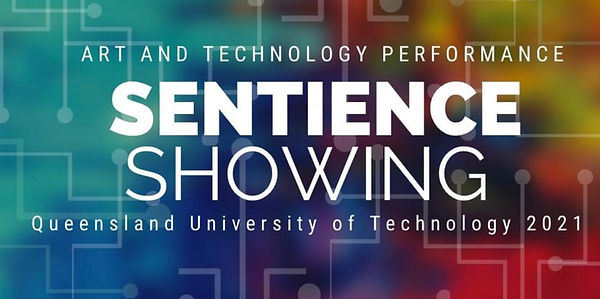
When it came to the Sentience showing, I volunteered to take the role as an usher within the front of house team. An usher’s role is to ‘help those in attendance at entertainment events, check tickets, direct people inside the venue, distribute programs and answer questions to audience members’ (Job Hero, 2021). However, for the Sentience project, my role required me to usher audience members in and out of the performance space and notify any late members to wait outside during the project performance of ‘Politics of Sentience’.

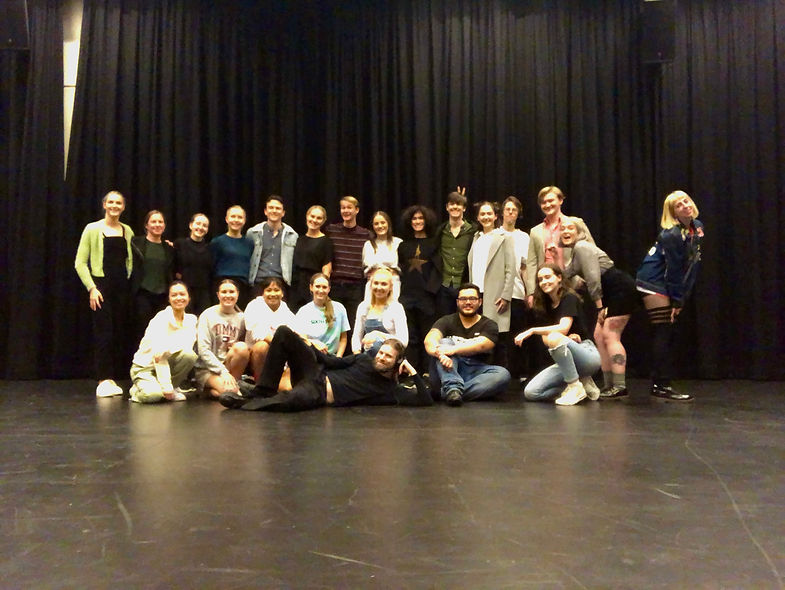
Reference List
Dam R. F. (2021). What is Ideation and How to Prepare for Ideation Sessions. Interaction Design Foundation. https://www.interaction-design.org/literature/article/what-is-ideation-and-how-to-prepare-for-ideation-sessions
ISEA International. (2020). Main Theme: Why Sentience? Sentience ISEA International. https://isea2020.isea-international.org/themes/
Job Hero. (2021). What Is an Usher? Job Hero. https://www.jobhero.com/career-guides/interviews/prep/what-is-an-usher
Shinabery K. (2019). How To Use Your Instagram To Promote Your Creativity. Medium. https://medium.com/vectornator/how-to-use-instagram-to-promote-your-creativity-70f3e079cf5b